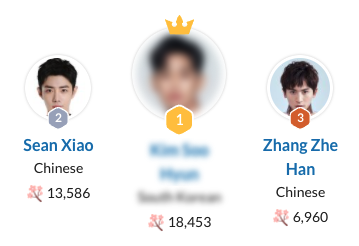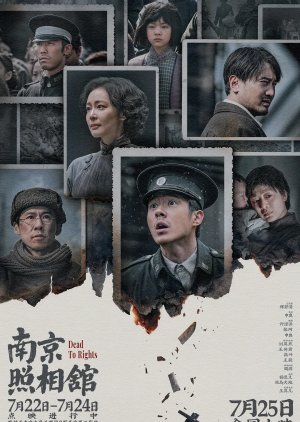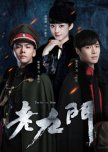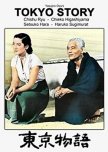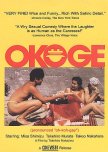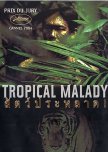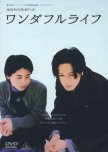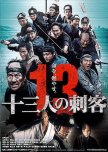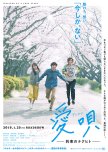
Even If It’s Propaganda — It Doesn’t Change The Fact That It Happened
If you’re watching Dead to Rights (南京照相馆) expecting a safe, dramatized war story, you’re in for a brutal wake-up call.Based on real events during the 1937 Nanjing Massacre, the film follows a postman, A Chang, who pretends to be a photo developer for the Japanese military to survive. Inside this false identity, he secretly turns the photo studio into a temporary refuge for Chinese civilians and soldiers. But in the face of unforgivable violence and horror, A Chang risks everything. Smuggling people to safety and preserving photographic evidence of the atrocities.
The story and visuals are brutally honest. This film does not shy away from the horror. It doesn’t soften the truth to make it easier to watch. Instead, it forces you to sit in the reality of one of the darkest chapters in modern history and to understand it for what it was: genocide, terror, survival, and silent resistance.
The performances in Dead to Rights are just as unforgettable. Every actor delivers with such rawness and restraint that it’s easy to forget you’re watching a movie. There’s no overacting here, just honest, human reactions to inhuman cruelty. I have never jump-scared in a movie before… but the tension in this film had me on edge the entire time. It’s not a horror movie, but the fear feels so real that your body reacts anyway. This isn’t just a film you watch but it’s one you feel in your bones.
But beyond the emotional weight, Dead to Rights is also visually stunning in the most haunting way. The cinematography is rich, atmospheric, and deeply intentional. Every frame felt like a carefully composed photograph, echoing the film’s themes of memory and documentation. The visuals don’t just show violence. They capture emotion, stillness, grief.
Some are calling this film CCP propaganda but honestly, that kind of reaction says more about the discomfort of facing truth than the film itself. You don’t have to take the movie’s word for it. A simple Google search will show you the reality. There are real photographs from the time: babies impaled on swords, civilians shot point-blank in the streets, bodies piled like garbage. These aren't exaggerated for film but they're documented, and they’re horrifying.
Because of Japan’s censorship and silence around this part of its history, many in Japan still grow up unaware of what truly happened in Nanjing. That silence is not just painful, it's dangerous. It allows wounds to stay open and accountability to fade. Dead to Rights may be confronting, but it’s confronting truth. And often, the real thing was worse. Far worse ... than anything a film could show.
There’s also been criticism about young children watching this film and coming away with anti-Japanese sentiment. And while it’s a complex issue, I think we need to ask: why are we blaming the Chinese government for children’s reactions… but not the parents who took them to see a film this raw, this heavy? This is not a movie for kids and that’s clear. But the responsibility lies with the adults who chose to bring them, not the filmmakers who told the truth.
And even if this was CCP propaganda... it wouldn’t change the fact that it happened. The events of the Nanjing Massacre are real, recorded, and undeniable. No amount of political framing erases the truth of what survivors endured. What matters now is that we remember, that we educate, and that we don’t look away.
In the end, Dead to Rights doesn’t just tell a story. It preserves memory. It confronts silence. It says, “Look. Don’t look away. Someone lived this. Someone died here. You can’t pretend it didn’t happen.”
And for that, I believe this film is not only necessary but it’s a masterpiece of remembrance.
Was this review helpful to you?

History wasn’t blurred
Prepare a tons of tissue and a plastic bag if you're going to watch this 😭The story tells about an album photo being hidden here and there from the Imperial Japanese Army (IJA) The photo albums contains direct evidence of the cruelty of what IJA did to people of Nanjing. It does reminds me the diary of Anne Frank.
The film is very very very disturbing, so much blood and brutality, so different than other historical film I've ever watch.
The director, Shen Ao said he made the film to honor the past, the survivors and the victims, so he doesn't really shy away from making it so graphic.
Theres so much silence during the film that just made you feel like you're there in Nanjing during the massacre and it just painful.
What i love from Shen Ao is that he doesn't use much CGI in his movies
Everything was shot beautifully
But i wouldn't recommend to watch more than once, due traumatizing the film is. Also if you have weak stomach and can't handle seeing blood, just skip this film
Was this review helpful to you?

Graphic war film with a focus on photography
Dead to Rights is a traditional war film. War movies are not my usual cup of tea, but as a photographer myself, I was interested in the photographic element of the story.Honestly, there’s a lot I could say about this film but won’t, because that critique is more of war films as a genre rather than anything special about Dead to Rights. The only thing I will note here before talking about the photography element of the storyline, is that I believe accusations of propaganda against this film are a bit redundant. All war films are propaganda. It doesn’t matter whether you’re watching Dead to Rights or Gallipoli, you can’t expect the genre to have no political motive.*
The initial drawcard for me was how Dead to Rights depicted the use of photography in war and atrocities. A lot of films I’ve watched that feature photographer characters normally position them as a truth-teller. One example that comes to mind given its narrative similarities is The Photographer of Mauthausen (Spanish, 2018) which tells the story of real-life Spanish concentration camp prisoner, Francois Boix, who took photographs at the camp, the negatives of which he hid until liberation and were ultimately used to prosecute the Nazis.
Dead to Rights was a little different because, while it had a photography-as-truth protagonist, it also used the Japanese military photographer as a foil. Although not delicately handled, I at least appreciated that the film attempted to go beyond the usual narrative of photography-as-truth. Even the Chinese characters seemed less interested in journalistic style documentation**, and more so in using the photographs as an act of resistance.
But all in all, I think the film did ultimately fall back on the simplistic photography-as-truth trope. It was made clear that scenes in the film were derived from the photographic archive of the Nanjing massacre. This also meant that that the film ended up trapped, I suspect willingly, in a paradox that Susan Sontag describes of war photography:
“The photograph gives mixed signals. Stop this, it urges. But it also exclaims, What a spectacle!”
—
*Of course, propaganda films aren’t just limited to war films, although this genre is one of the more blatant forms.
**I should mention that, citing Sontag again, war photography as critical documentation – rather than as morale-boosting PR – didn’t really come into the fore until the Vietnam War.
Was this review helpful to you?

Heart-wrenching
Brutal and devastating. I found myself really caring for every character, and the additional theme of war photography is extremely interesting. There's some moments towards the end that do feel very propaganda-y, but I think the overall takeaway of the film remains the same. Prepare for some very graphic scenes.(The only thing that ruined my immersion was...you guessed it. The terrible English-speaking actors.)
Was this review helpful to you?
